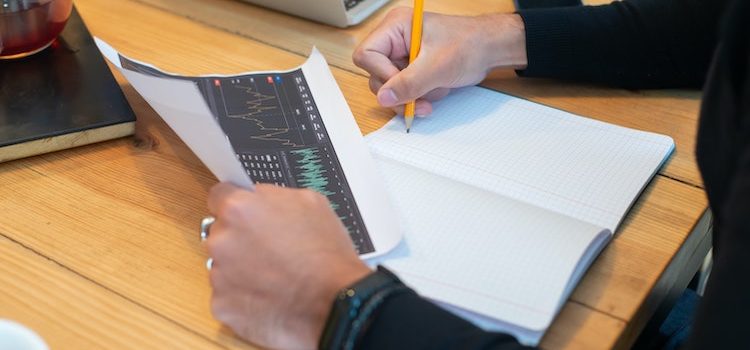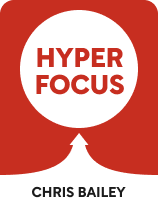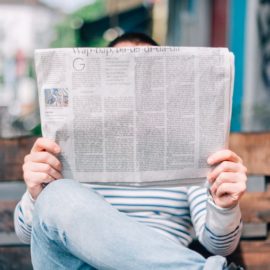

This article is an excerpt from the Shortform book guide to "Hyperfocus" by Chris Bailey. Shortform has the world's best summaries and analyses of books you should be reading.
Like this article? Sign up for a free trial here .
What is meta-awareness? How could attention tracking help you focus on the right things?
In the context of attention, meta-awareness is simply being aware of what you’re paying attention to. By practicing meta-awareness in the form of attention tracking, you can become acutely aware of where your attention goes.
Here is how meta-awareness can help you focus more deliberately and, as a result, be more productive.
Meta-Awareness and Attention Tracking
In order to learn how to focus and manage your attention well, it’s helpful to understand the current state of your attention. Using Chris Bailey’s techniques, you’ll realize how little time you spend deliberately directing your attention—and the insignificance of the tasks that take up your time when you spend most of your day in autopilot mode. You’ll also discover what important tasks you could be spending more time on if you deliberately directed your attention.
Moreover, Bailey argues, just by practicing meta-awareness—awareness of your attention—you become better at deliberately directing where your attention goes. This also improves your productivity: You notice more quickly when you’re distracted and thus can refocus faster. (Shortform note: Don’t confuse the term “meta-awareness” with “metacognition,” which refers to thinking about thinking, and is more commonly used in discussions about learning. You may also recognize the term as the blue hat Edward de Bono describes in Six Thinking Hats.)
We’ll review the two main strategies Bailey suggests for tracking your attention: the attention management matrix and the attention alarm.
The 4 Categories of Tasks: Bailey’s Attention Management Matrix
Bailey suggests that you create an attention management matrix to determine the tasks worthy of your attention. By sorting your tasks, you’ll gain a clear picture of how you’re spending your time and where you could be more efficient.
Use the matrix to sort your tasks into four quadrants:
Quadrant 1: Tasks That Are Unnecessary
These tasks are both unproductive and unenjoyable (which Bailey calls unattractive). You probably perform tasks that are unnecessary—like sorting your pen drawer—when you’re avoiding something else you should be doing.
Quadrant 2: Tasks That Are Distracting
These tasks are enjoyable (which Bailey calls attractive) but unproductive. These are the time sucks to watch out for the most—like smartphone games.
Quadrant 3: Tasks That Are Necessary
These tasks are productive but unenjoyable. These are the tasks you have to force yourself to do, like cleaning the kitchen or sitting through a boring meeting.
Quadrant 4: Tasks That Are Meaningful
Tasks that are meaningful, which Bailey calls “purposeful work,” are both productive and enjoyable. These tasks help you achieve your broader purpose in life.
You may only have a few meaningful work tasks, but they are most connected to your purpose. Bailey notes that they’re also usually difficult, and you may be better at them than most other people, so it’s a good use of your time to focus on them.
| The Pareto Principle: Focus on Meaningful Tasks More specifically, Quadrant 4 tasks are what we might call “Pareto Principle tasks.” The Pareto Principle, or the 80/20 rule, states that 80% of your outcomes come from 20% of the work you do. So focus on the 20% of your tasks that get you 80% of your results. For example, if you’re a doctor, your Pareto Principle tasks might be to diagnose and treat patients. Filling out their medical charts—although connected to your broader purpose of helping people—likely falls under necessary work. |
When you’ve finished, review your matrix. If you spend most of your day doing Quadrant 1 or 2 tasks, you’re likely operating mostly on autopilot. If you spend most of your day doing Quadrant 3 or 4 tasks, you likely already have some practice managing your attention deliberately.
In this way, creating this matrix shows you how well you currently manage your attention and how much you could improve. It also clarifies what Quadrant 4 tasks you should be focusing on. We’ll return to this in Step 1 of Hyperfocus.
(Shortform note: Bailey doesn’t mention that his attention management matrix is extremely similar to a time management tool commonly known as the Eisenhower matrix. Originally developed by President Dwight D. Eisenhower, it was popularized by Stephen Covey’s The 7 Habits of Highly Effective People. It’s also the basis of Covey’s First Things First. The Eisenhower matrix splits tasks into four quadrants based on their urgency and importance. In other words, tasks can be urgent and important, urgent and not important, not urgent but important, or neither urgent nor important.)
How to Track Your Attention
Another way to understand where your awareness goes is to set an attention alarm, which Bailey refers to as an “hourly awareness chime.”
To do this, set an alarm on your phone to go off every hour. When it rings, note where your attention is at that moment. Specifically, Bailey recommends asking yourself questions like: What am I doing right now? Is this what I want to be working on?
If the alarm annoys you, Bailey recommends an alternative: Note where your attention is at natural breaks in your day, like when you leave your desk.
Why Tracking Your Attention Matters
Why set an attention alarm? Bailey posits that it’s the easiest way to implement the habit of attention tracking. Also, tracking your attention improves the quality of your attention, which Bailey argues depends on three factors.
Factor #1: You can assess the quality of your attention based on how long you can focus: The longer you can focus on a single thing, the higher the quality of your focus. When you track your attention, you notice potential distractions and defend against them in advance—so you focus for longer.
Factor #2: You can assess the quality of your attention based on how long it takes you to notice that your mind has wandered. When you track your attention, you notice your mind has wandered more quickly and so you refocus faster.
Factor #3: You can assess the quality of your attention based on how frequently you deliberately direct your attention. Bailey argues that tracking your attention improves this. For example, in Chapter 4, Bailey argues that if you track how often you check your email, you’ll notice how much it disrupts you and implement measures to check it less.
(Shortform note: The idea of assessing the quality of your attention based on these three factors appears unique to Bailey. A more common way psychologists assess how well you pay attention is the Stroop test, which presents words like red or green in colored text, asks you to name the color of the text, and measures how long it takes you. (For example, you would see the word “red” in green text, and the psychologist would measure how long it took you to say “green.”))
| Why Time-Tracking Software Doesn’t Count as an Attention Alarm If you spend most of your day on your computer, you might skip setting an attention alarm and use time-tracking software instead. After all, apps like RescueTime log exactly what you do and when you do it. But you experience the benefits of tracking your attention when you track it in the moment—you notice your mind wandering so you refocus, and you notice potential distractions before they distract you. You can’t notice these things if you wait until the end of the day or week to see where your attention went. And while the insights you gain from time-tracking software may prompt you to take more measures to deliberately direct your attention, it’s likely more powerful to notice that you’re distracted when you’re distracted rather than noticing after you become distracted. So while time-tracking software can be useful, use it in conjunction with the attention alarm rather than in place of the attention alarm. |
Make tracking your attention a lifelong practice. No matter how good you get at deliberately managing your attention, you will always face potential distractions, and your mind will always wander—so you’ll always experience the benefits of tracking your attention. Bailey adds that by tracking your attention, you’ll see how your ability to focus improves over time, which is a rewarding experience.
(Shortform note: You can only track how your focus improves over time if you remember how well you focus at various stages of your life. But Bailey doesn’t suggest writing down any of the answers to the questions you ask when your attention alarm rings—which is interesting, given that he discusses extensively the limitations of human memory. Dedicate a notebook to tracking your attention to accurately track your progress.)
Bailey suggests a similar albeit shorter-term strategy in Chapter 0.5: Spend a few days tracking when and why you reach for your phone. The patterns that emerge will give you insight into what tasks you least like doing and the emotional state you’re in when you reach for your phone. Use this information to create and implement strategies to reach for your phone less. (Shortform note: Newport suggests a version of this in Digital Minimalism, when he recommends limiting your access to technology for 30 days. This “digital declutter” reveals both the current effects of various technologies on your life and the true consequences of not using them.)

———End of Preview———
Like what you just read? Read the rest of the world's best book summary and analysis of Chris Bailey's "Hyperfocus" at Shortform .
Here's what you'll find in our full Hyperfocus summary :
- Why it's just as important to learn how to manage your attention, along with your time
- Why you still feel tired no matter how many breaks you take
- Strategies for managing your attention for better productivity and creativity






